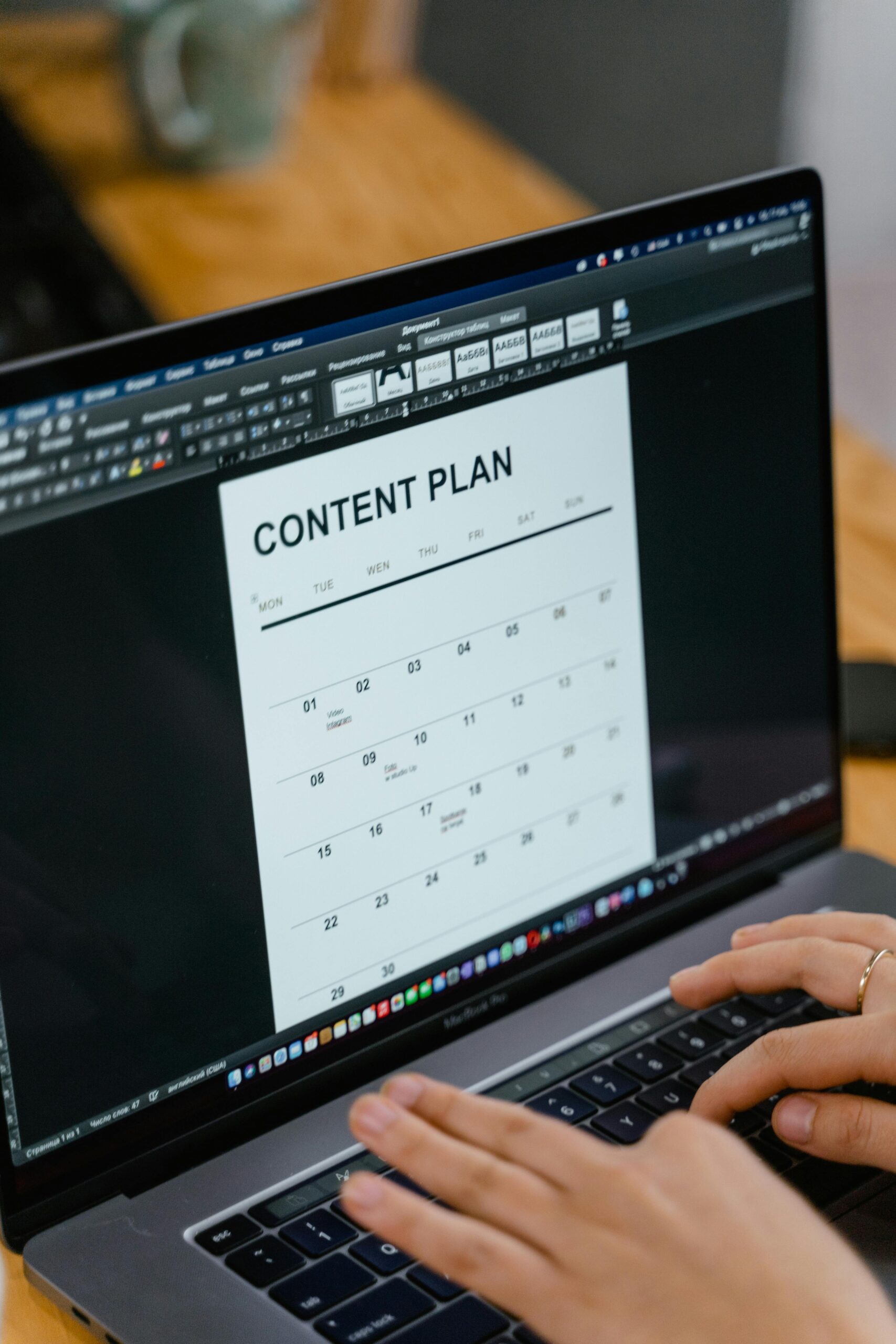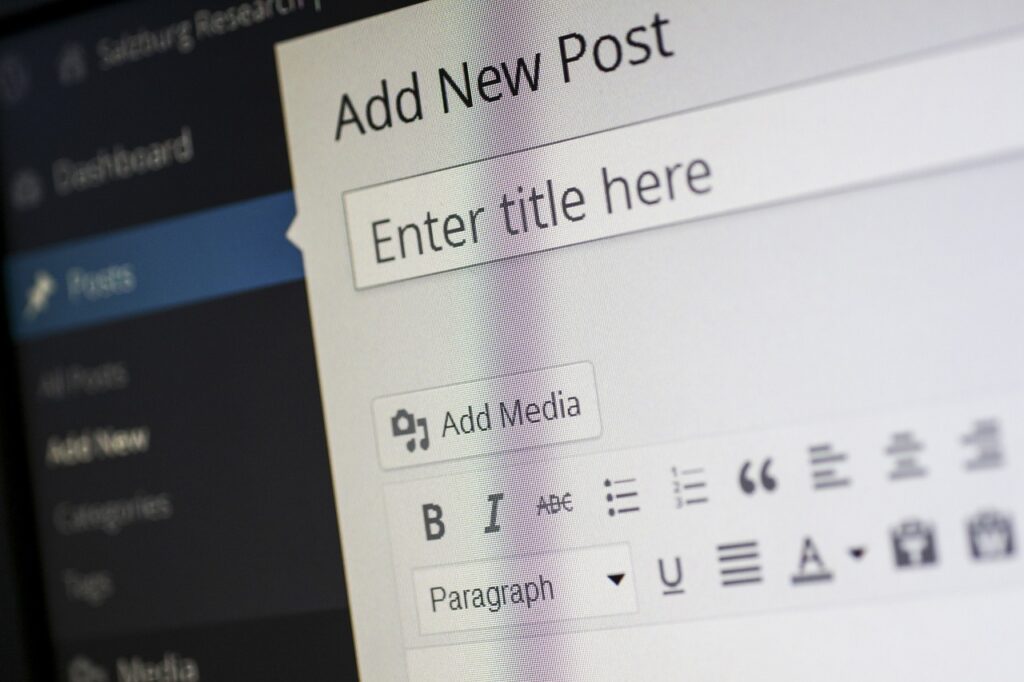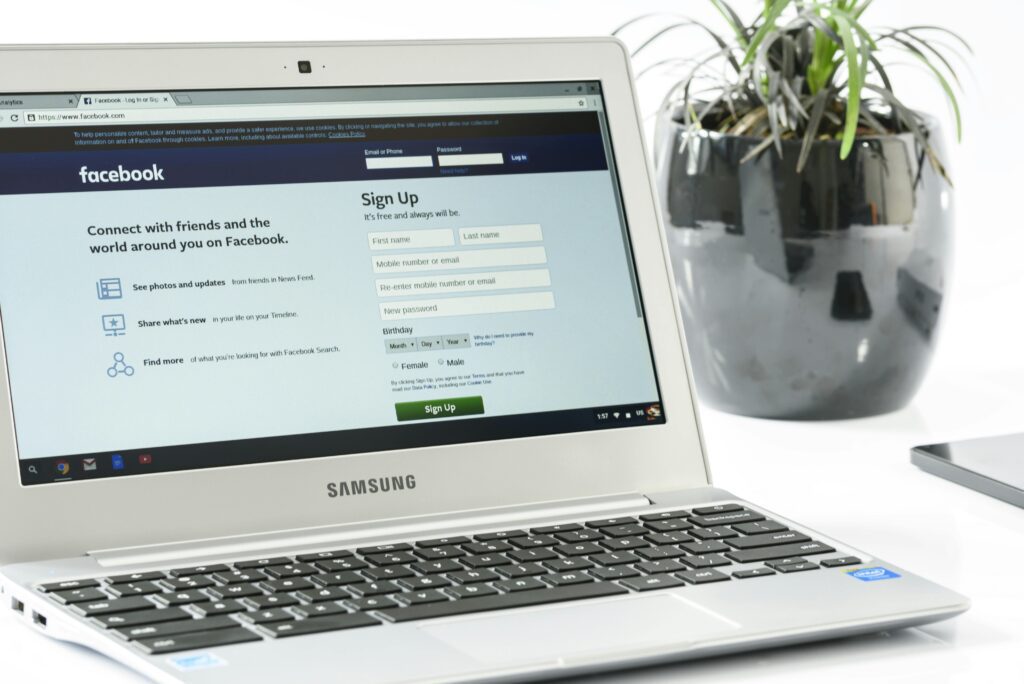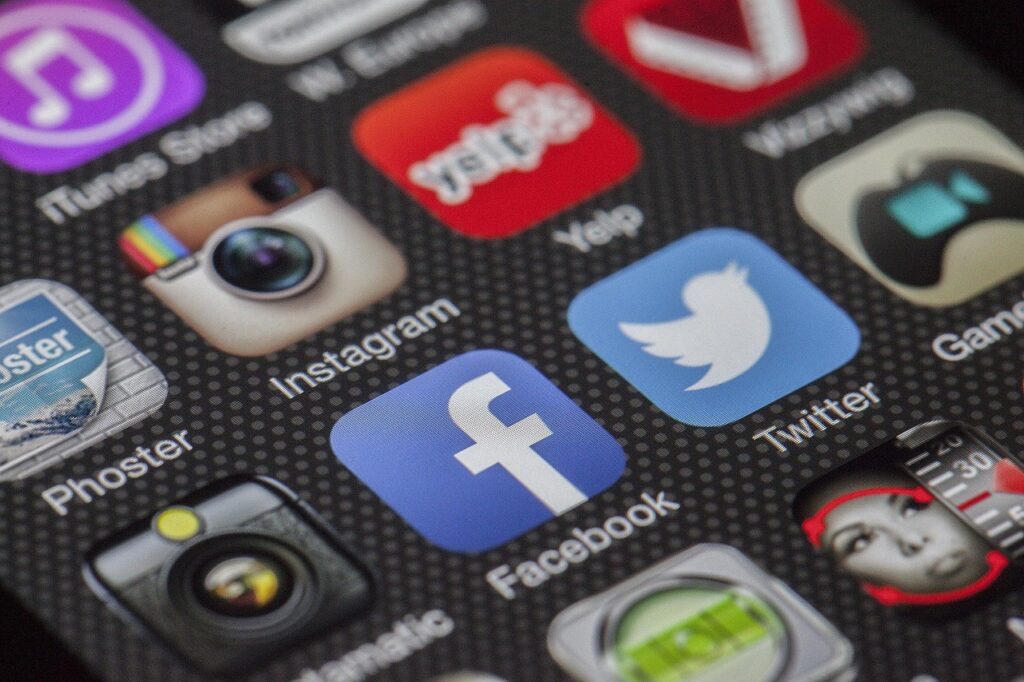Introduction
Imagine reaching 5.42 billion people worldwide with a single strategic approach that costs virtually nothing yet delivers exponential returns [1]. In today’s hyperconnected digital landscape, social media scheduling has evolved from a convenient time-saver to an essential competitive advantage that separates thriving brands from those struggling to maintain relevance. With businesses reporting up to 5 times more engagement through consistent posting schedules and saving 6-9 hours weekly through strategic automation [14][13], social media scheduling represents one of the most powerful yet underutilized tools in modern digital marketing. The question isn’t whether your business needs to schedule posts—it’s whether you can afford to operate with it
What Is Social Media Scheduling?
Social media scheduling is the strategic practice of planning, creating, and automatically publishing content across multiple social media platforms at predetermined times, eliminating the need for manual, real-time posting. This systematic approach allows marketers to prepare content weeks or months in advance using specialized tools that publish posts when target audiences are most active and engaged.
The process encompasses two primary methodologies: native platform scheduling and third-party management tools. While native scheduling functions work for basic needs, comprehensive scheduling platforms offer advanced features including content calendars, analytics integration, team collaboration workflows, and cross-platform management capabilities. Modern scheduling tools support major platforms including Facebook, Instagram, Twitter, LinkedIn, TikTok, YouTube, and Pinterest, enabling centralized management of entire social media ecosystems.
Why It Matters
The digital marketing landscape has reached unprecedented scale, with total social media advertising spend projected to reach $276.7 billion in 2025 [1]. In this intensely competitive environment, consistent brand presence has become non-negotiable for business survival and growth.
Research demonstrates that 83% of successful marketers utilize content scheduling and automation tools, highlighting the critical role strategic planning plays in social media success. The impact extends far beyond convenience—businesses implementing consistent posting schedules experience 5 times more engagement per post compared to sporadic posters [14]. Even moderately consistent brands achieve 4 times higher engagement rates than inconsistent competitors [14].
The efficiency gains prove equally compelling. Organizations report saving 6-9 hours weekly through scheduling automation, allowing teams to redirect efforts toward strategic content creation and real-time engagement [13]. This time optimization translates directly to improved return on investment, with companies utilizing scheduling strategies reporting 40% increases in overall social media ROI [13]. Furthermore, businesses that invest in digital marketing strategies see 2.8 times higher revenue growth than those that don’t.
The data reveals a clear truth: in an era where the average person spends 2 hours and 23 minutes daily on social media across 6.8 different platforms [8], brands must maintain strategic presence to capture attention and drive meaningful engagement.
The Psychology Behind It
Social media scheduling success stems from powerful psychological principles that influence human behavior and decision-making. Understanding these mechanisms enables marketers to create more effective content strategies that resonate deeply with target audiences.
Social Proof and Authority form the foundation of scheduling psychology. When brands maintain consistent posting schedules with high-quality content, they establish themselves as authoritative voices in their industries. This perceived authority makes audiences more likely to engage with content and follow recommendations, as people naturally look to others for behavioral cues when making decisions.
Reciprocity plays a crucial role in scheduled content effectiveness. When brands consistently provide valuable content through strategic scheduling—whether educational tutorials, helpful insights, or entertaining stories—audiences feel psychologically compelled to reciprocate through engagement, loyalty, and advocacy. This principle becomes particularly powerful when content delivery is predictable and reliable, creating expectation patterns that strengthen audience relationships.
Fear of Missing Out (FOMO) drives immediate engagement with scheduled content. Strategic scheduling enables brands to create urgency around limited-time offers, exclusive content, or timely campaigns. The psychological pressure to stay informed and participate pushes audiences to engage quickly, ensuring they remain connected to brand conversations and opportunities.
The Dopamine Effect explains why consistent scheduling builds addictive engagement patterns. Every notification, like, or comment triggers dopamine release in users’ brains, creating pleasure and accomplishment sensations. Brands leveraging consistent scheduling can capitalize on this neurological response by creating predictable interaction opportunities that audiences anticipate and seek.
Consistency and Trust Building operate on fundamental human psychology around reliability and predictability. Regular posting schedules demonstrate that brands are active, invested, and professional, building trust essential for brand recognition and customer loyalty. This psychological foundation creates stronger emotional connections between brands and audiences over time.
How It Works
Social media scheduling operates through a systematic process that combines strategic planning with automated execution. Understanding this workflow is essential for implementing effective scheduling strategies that maximize reach and engagement.
Step 1: Audience Research and Goal Setting
The foundation begins with comprehensive audience analysis using platform analytics, social listening tools, and engagement pattern studies. Define clear objectives that align social media goals with broader business outcomes, whether focusing on brand awareness, lead generation, or customer retention. Establish key performance indicators that will guide scheduling decisions and measure success over time.
Step 2: Content Calendar Development
Create a comprehensive content calendar that outlines what content will be published, when, and on which platforms. Successful calendars include content type, publication date and time, target platform, captions, hashtags, and task status. Industry experts recommend planning content at least two weeks in advance, with some brands developing quarterly content strategies for maximum efficiency.
Step 3: Platform-Specific Timing Optimization
Determine optimal posting times based on audience activity patterns and platform characteristics [7]. Recent research shows that the best general posting times are Saturdays at 7:00 AM for Facebook, Mondays or Tuesdays between 10:00 AM and 1:00 PM for X (Twitter), Thursdays at 3:00 PM for TikTok, and Tuesdays at 8:00 AM for Threads [7]. However, these times can vary significantly by industry and audience demographics.
Step 4: Content Creation and Categorization
Develop content organized into strategic categories such as promotional, educational, and entertaining posts that can be queued separately for automated publishing. This approach ensures content variety while maintaining consistent brand messaging across all touchpoints. Use content pillars to guide creation and maintain thematic consistency.
Step 5: Tool Selection and Setup
Choose scheduling platforms based on specific needs, budget, and team size. Leading options include SocialBee for AI-powered scheduling and content curation, Buffer for user-friendly functionality, Hootsuite for enterprise-level solutions, and Sprout Social for comprehensive analytics integration [26][25]. Configure tools with appropriate permissions, approval workflows, and team collaboration features.
Step 6: Automated Publishing and Monitoring
Schedule content for optimal times while maintaining flexibility for real-time adjustments. Monitor engagement metrics closely, adjusting posting times, frequency, and content types based on performance data. Implement A/B testing for different posting schedules to optimize approach continuously.
Why It’s Effective
Social media scheduling delivers measurable results through multiple strategic, technical, and psychological advantages that compound over time. Understanding these effectiveness drivers helps explain why businesses consistently report improved outcomes when implementing strategic scheduling approaches.
Algorithmic Optimization represents a significant technical advantage. Social media algorithms favor consistent, active accounts, meaning regular posting schedules lead to higher visibility and improved organic reach. Platforms like Instagram and LinkedIn particularly reward active users, with consistent posting directly correlating to increased content distribution and audience growth.
Time Zone and Audience Reach Expansion becomes possible through strategic scheduling. Brands can extend their reach by scheduling content to publish during optimal hours across different time zones, effectively expanding potential audience without requiring round-the-clock manual management [10]. This global reach capability proves essential for businesses serving international markets.
Resource Efficiency and Scalability drive substantial business value. The scheduling automation market was worth $6.1 billion in 2019 and is expected to reach $16.87 billion by 2025, with 75% of companies currently using these tools [15]. This growth reflects the significant efficiency gains organizations experience through automation.
Performance Consistency and Predictability emerge from strategic scheduling. Research shows that highly consistent posters achieve 5 times more engagement per post than sporadic posters, with engagement rates of 4.47 per post after 21 weeks of consistent posting [14]. This consistency builds audience expectations and creates reliable touchpoints for brand interaction.
Enhanced Content Quality Through Batch Production allows for more thoughtful content creation. When marketers batch-create content in advance, they can focus on quality, consistency, and strategic messaging without the pressure of daily deadlines. This approach leads to more polished, effective content that performs better across platforms.
How to Implement It

Implementing an effective social media scheduling system requires careful planning, appropriate tools, and systematic execution. This comprehensive implementation guide provides practical frameworks for launching and optimizing your scheduling strategy.
Phase 1: Strategic Foundation Development
Begin by conducting comprehensive audience research using platform analytics, social listening tools, and engagement pattern analysis [33]. Create detailed buyer personas and map their social media behaviors, including active hours, content preferences, and platform usage patterns. Define clear, measurable objectives that align social media goals with broader business outcomes [37]. Establish baseline metrics for engagement rates, reach, and conversion tracking to measure improvement over time.
Phase 2: Platform Selection and Posting Strategy
Determine optimal posting frequencies based on current research and platform characteristics. Recommended frequencies include: Facebook posting once or twice daily, Instagram posting 3-5 times weekly, Twitter posting 2-3 times daily, LinkedIn posting 1-2 times daily, TikTok posting 3-5 times weekly, and YouTube posting once weekly [39]. However, adapt these recommendations based on your specific audience behavior and engagement patterns.
Phase 3: Tool Selection and Configuration
Choose scheduling tools based on your specific requirements and budget constraints. Top-rated options include:
- SocialBee: Best overall choice with AI-powered scheduling, content curation, and intelligent categorization features
- Hootsuite: Enterprise-level solution with comprehensive integrations and team collaboration tools
- Buffer: User-friendly option with plans ranging from free to premium levels
- Sprout Social: Advanced analytics integration with comprehensive reporting capabilities [25]
- CoSchedule: Marketing calendar integration with campaign management features
Phase 4: Content Calendar Creation and Organization
Develop a comprehensive content calendar using tools like Google Sheets, specialized platforms, or project management software. Your calendar should integrate important industry events, holidays, and seasonal campaigns while maintaining strategic balance between promotional, educational, and entertaining content [40]. Create content pillars that guide your posting strategy and ensure consistent brand messaging across all platforms.
Phase 5: Implementation and Optimization
Begin with a pilot program focusing on 2-3 platforms to test your scheduling strategy. Monitor engagement metrics closely, adjusting posting times, frequency, and content types based on performance data [36]. Implement A/B testing for different posting schedules and content formats to optimize your approach continuously. Use analytics data to refine your strategy monthly, ensuring your scheduling approach evolves with audience preferences and platform changes.
Advanced Strategies and Best Practices
Maximizing social media scheduling effectiveness requires implementing sophisticated strategies that go beyond basic automation. These advanced approaches help brands achieve superior engagement rates and build stronger audience relationships.
Content Recycling and Evergreen Strategy
Implement content recycling strategies that allow high-performing evergreen content to be reshared at strategic intervals. This approach maximizes content ROI while ensuring valuable information reaches new audience segments over time. Tools like MeetEdgar excel at this functionality, automatically rotating evergreen content to maintain consistent posting schedules without manual intervention.
AI-Powered Content Enhancement
Leverage artificial intelligence tools for content creation and optimization. Research shows that AI-assisted posts consistently demonstrate higher median engagement rates across all platforms, with combined data showing 5.87% engagement for AI-assisted content versus 4.82% for non-AI content [6]. The most significant improvements appear on Threads (11.11% vs 5.56%), Facebook (6.13% vs 4.89%), and TikTok (6.14% vs 4.17%) [6].
Cross-Platform Content Customization
Avoid posting identical content across all platforms. Instead, customize content for each platform’s unique characteristics and audience expectations. This involves adjusting image dimensions, modifying captions for platform-specific tone, selecting appropriate hashtag strategies, and optimizing content length for each platform’s algorithms.
Hybrid Engagement Strategy
While scheduling automates content publishing, maintain active engagement by monitoring comments, messages, and mentions in real-time. This hybrid approach combines scheduling efficiency with authentic immediate response, creating stronger audience connections and improving overall engagement rates. Set aside dedicated time for real-time interaction to complement your scheduled content strategy.
Conclusion
Social media scheduling has evolved from a convenient time-management tool to a strategic imperative in today’s digital marketing landscape. The evidence overwhelmingly supports its transformative impact: brands implementing consistent scheduling strategies achieve 5 times more engagement, save up to 9 hours weekly, and experience 40% improvements in social media ROI [14][13].
The psychological principles underlying social media success—social proof, reciprocity, FOMO, and consistency—are amplified through strategic scheduling that ensures reliable touchpoints with your audience. Combined with technical advantages like algorithmic optimization and resource efficiency, scheduling becomes a powerful catalyst for sustainable brand growth in an increasingly competitive digital environment.
Success in social media scheduling demands more than automation—it requires strategic thinking, deep audience understanding, and continuous optimization based on performance data. As the digital landscape continues evolving with 5.42 billion social media users spending over 2 hours daily across multiple platforms [1][8], brands that master strategic scheduling will maintain competitive advantages in building meaningful audience relationships and driving measurable business results.
The path forward is clear: implement these scheduling strategies today. Start with a simple content calendar, select a scheduling tool that aligns with your needs and budget, and commit to consistency over perfection. The compound effect of regular, strategic posting will transform your social media presence and deliver tangible business impact. In the dynamic world of social media, consistency isn’t just beneficial—it’s the cornerstone of lasting digital success.
Frequently Asked Questions About Social Media Scheduling
What is social media scheduling and why do I need it for my business?
Social media scheduling is a marketing automation tool that allows brands to plan, create, and automatically publish content across multiple social media platforms at predetermined times, rather than posting manually in real-time. This strategic approach enables marketers to prepare content weeks or months in advance and leverage specialized tools to publish posts when their audience is most active. Your business absolutely needs social media scheduling to maintain a constant social media presence without having someone online 24/7, as it would be a complete waste of time and resources to manually post every time, especially when posting multiple times throughout the day on various social media accounts [1]. Research shows that 83% of successful marketers use content scheduling and automation tools, with businesses using consistent posting schedules seeing 5 times more engagement per post compared to sporadic posters [10].
Which social media scheduling tool should I choose and what will it cost?
The best scheduling tool depends on your specific needs, budget, and business size, with popular options including Buffer for user-friendly functionality, Hootsuite for enterprise-level solutions, SocialBee for AI-powered scheduling, and SocialPilot for cost-effective bulk scheduling. Social media management costs vary significantly based on your requirements, with typical pricing ranging from $50-$300+ per hour for agencies, $1,000-$20,000 for monthly retainers, and $500-$50,000 for project-based work [17]. For small businesses, hourly rates typically range from $50-$100, while mid-level agencies charge $100-$200 per hour, and larger specialized enterprises may charge $200-$300+ per hour [17]. When selecting a tool, look for comprehensive features such as content calendars, analytics, team collaboration, and multi-platform support, with bonus points for integration with your existing marketing software.
When are the best times to post on social media and how often should I post?
The optimal posting frequency varies by platform, with Instagram requiring 3-5 posts per week, Facebook needing 1-2 posts per day, X (Twitter) performing best with 2-3 posts daily, LinkedIn succeeding with 1-2 posts per day, TikTok benefiting from 3-5 posts weekly, and Pinterest requiring at least 1 post per week [15]. Timing is equally crucial, as posting when your audience is most active ensures higher visibility and engagement, with platforms like Instagram and TikTok peaking during leisure hours while LinkedIn typically performs better during business hours. The best approach is to analyze your audience activity using platform analytics tools like Facebook Insights or Instagram Insights to identify when your specific audience is most engaged [7]. You should experiment with different posting times and frequencies based on your unique audience, location, and type of business, as these general guidelines serve as starting points that require personalization through continuous testing and optimization.
What are the biggest mistakes to avoid when scheduling social media content?
The most common scheduling mistakes include posting identical content across all platforms without customization, as each platform has unique audiences and functionality that should be leveraged appropriately. You should avoid scheduling non-evergreen content as recurring posts, which can lead to outdated contests, seasonal content appearing at wrong times, or expired deals being promoted months later. Another critical mistake is mentioning time-based references in scheduled posts, such as specific days of the week, seasons, or referring to something as “new” content, which can confuse audiences when posts are recycled. Don’t fall into the “schedule and forget” mentality, as you must actively monitor engagement and respond to comments in real-time to maintain authentic connections with your audience. Finally, avoid scheduling time-sensitive content or live event posts, as these should be posted manually for authenticity and timeliness.
How can I create an effective social media posting schedule without getting overwhelmed?
Start by creating a comprehensive content calendar that includes your post message, images, links, publication dates and times, and target platforms, using tools like spreadsheets or specialized scheduling platforms. Schedule posts weekly or daily rather than months in advance to allow flexibility for last-minute changes and to catch potential issues before posts go live. Use bulk scheduling features available in most social media management tools to upload multiple posts at once, which can save significant time compared to individual scheduling. Set reminders to schedule posts and ensure team members know what’s scheduled to avoid overlap, while maintaining a balance between promotional, educational, and entertaining content to keep your audience engaged [5][9]. Most importantly, don’t put your social media schedule completely on autopilot—regularly monitor performance, engage with your audience in real-time, and adjust your strategy based on analytics data to ensure continuous improvement.
- ^ Sprout Social. “80+ Must-Know Social Media Marketing Statistics for 2025.” Sprout Social Insights, May 6, 2025. https://sproutsocial.com/insights/social-media-statistics/.
- ^ Smart Insights. “Global social media statistics research summary.” Smart Insights, February 14, 2025. https://www.smartinsights.com/social-media-marketing/social-media-strategy/new-global-social-media-research/.
- ^ SocialPilot. “40+ Social Media Statistics and Facts to Know in 2025.” SocialPilot Blog, June 4, 2025. https://www.socialpilot.co/blog/social-media-statistics.
- ^ Hootsuite. “Social Media Trends 2025.” Hootsuite Research, May 30, 2025. https://www.hootsuite.com/research/social-trends.
- ^ Sonary. “Social Media Statistics for 2025: The Game-Changing Data.” Sonary, January 5, 2025. https://sonary.com/content/social-media-statistics-the-game-changing-data/.
- ^ Buffer. “Data: Engagement Rate of 1.2 Million AI-Assisted Posts vs. Human.” Buffer Resources, October 14, 2024. https://buffer.com/resources/ai-assistant-post-performance/.
- ^ Hancock, Alecia. “New research: Best times to post on social.” Alecia Hancock Blog, December 9, 2024. https://www.aleciahancock.com/blog/new-research-best-times-to-post-on-social.
- ^ Talkwalker. “128 Must-Know Social Media Statistics for 2025.” Talkwalker Blog, June 11, 2025. https://www.talkwalker.com/blog/social-media-statistics.
- ^ Brandwatch. “12 Best Social Media Scheduling Tools in 2024.” Brandwatch Blog, April 11, 2025. https://www.brandwatch.com/blog/best-social-media-scheduling-tools/.
- ^ Eclincher. “A comprehensive guide to social media scheduling in 2025.” Eclincher Articles, August 19, 2024. https://www.eclincher.com/articles/a-comprehensive-guide-to-social-media-scheduling-in-2024.
- ^ Sprinklr. “How to Do Social Media Scheduling: A Definitive Guide [2024].” Sprinklr CXM, May 8, 2024. https://www.sprinklr.com/cxm/social-media-scheduling/.
- ^ Toptal. “48 Best Social Media Scheduling Tools (2024 Ultimate List).” Toptal External Blogs, June 13, 2025. https://www.toptal.com/external-blogs/growth-collective/best-social-media-scheduling-tools.
- ^ Sociamonials. “How Social Media Scheduling Can Save Time and Increase ROI.” Sociamonials Blog, March 25, 2024. https://blog.sociamonials.com/social-media-scheduling-save-time-increase-roi-2/.
- ^ Buffer. “Consistent Posting Means 5x More Likes, Comments, and Shares: Study.” Buffer Resources, January 29, 2025. https://buffer.com/resources/consistent-posting-study/.
- ^ Project Aeon. “Top Social Media Automation Tools: A Complete Guide To Streamline Your Marketing.” Aeon Blog, February 7, 2025. https://project-aeon.com/blogs/top-social-media-automation-tools-a-complete-guide-to-streamline-your-marketing.
- ^ BytePlus. “A comprehensive guide to social media scheduling in 2024.” BytePlus Topic, December 11, 2024. https://www.byteplus.com/en/topic/74656.
- ^ Emma Is Social. “The psychology of social media engagement: How to create content.” Emma Is Social Blog, January 22, 2024. https://emmaissocial.com/blog/the-psychology-of-social-media-engagement.
- ^ Social Hospitality. “The Psychology Behind Social Media Engagement.” Social Hospitality Blog, October 29, 2024. https://socialhospitality.com/2024/10/the-psychology-behind-social-media-engagement/.
- ^ Qualia Academy. “The Psychology of Social Media Engagement.” Qualia Academy, March 17, 2025. https://qualia-academy.co.uk/psychology-of-social-media-engagement/.
- ^ Zona Plus. “7 principles of psychology to improve your social media.” Zona Plus Blog, April 24, 2024. https://www.zonaplus.hr/en/blog/social-media-management/7-principles-of-psychology-to-improve-your-social-media.
- ^ MissingLettr. “The Psychology of Social Media Engagement.” MissingLettr Blog, July 24, 2024. https://missinglettr.com/blog/psychology-social-media-engagement/.
- ^ Social Proofy. “What is FOMO and Social Proof?” Social Proofy Documentation. https://www.socialproofy.io/docs/knowledge-base/what-is-fomo-and-social-proof/.
- ^ GetResponse. “3 Psychology Tricks To Boost Your Social Media Campaign.” GetResponse Blog, July 7, 2020. https://www.getresponse.com/blog/3-psychology-tricks-boost-social-media-campaign.
- ^ Futurists Media. “5 Hidden Psychological Triggers That Drive Interaction.” Futurists Media Blog, February 13, 2025. https://futuristsmedia.com/the-psychology-of-social-media-engagement/.
- ^ Sprinklr. “Top 15 Social Media Scheduling Tools for 2025.” Sprinklr Blog, June 9, 2025. https://www.sprinklr.com/blog/social-media-scheduling-tools/.
- ^ Blogging Wizard. “17 Best Social Media Scheduling Tools (2025 Comparison).” Blogging Wizard, June 6, 2025. https://bloggingwizard.com/best-social-media-scheduling-tools/.
- ^ Post Planner. “11 Best Social Media Scheduling Tools (Reviewed).” Post Planner Blog, November 3, 2024. https://www.postplanner.com/blog/9-best-tools-to-manage-social-media-posts/.
- ^ Connell, Adam. “13 Best Social Media Scheduling Tools (2025 Pros And Cons).” Adam Connell Blog, April 16, 2025. https://adamconnell.me/social-media-scheduler-tools/.
- ^ Sprout Social. “19 best social media scheduling tools to save time.” Sprout Social Insights, June 13, 2025. https://sproutsocial.com/insights/social-media-scheduling-tools/.
- ^ Statusbrew. “15 Best Social Media Scheduling Tools in 2025.” Statusbrew Insights, January 10, 2025. https://statusbrew.com/insights/social-media-scheduling-tools.
- ^ Ecwid. “Top 10 Appointment Scheduling Software for SMBs.” Ecwid Blog, September 26, 2024. https://www.ecwid.com/blog/top-10-appointment-scheduling-software-for-small-and-midsize-businesses.html.
- ^ SocialBu. “25+ Best Social Media Scheduling Tools Free For 2024.” SocialBu Blog. https://socialbu.com/blog/best-social-media-scheduling-tools/.
- ^ Sprout Social. “How to craft an effective social media content strategy.” Sprout Social Insights, June 5, 2025. https://sproutsocial.com/insights/social-media-content-strategy/.
- ^ Hootsuite. “Content Planning for Social Media in 8 Steps [2024 Guide].” Hootsuite Blog, December 18, 2024. https://blog.hootsuite.com/content-planning/.
- ^ Sprinklr. “Social Media Content Strategy for Each Platform.” Sprinklr Blog, December 7, 2024. https://www.sprinklr.com/blog/social-media-content-strategy/.
- ^ The Social Shepherd. “7 Steps for the Ultimate Social Media Content Strategy (+ Template).” The Social Shepherd Blog, May 29, 2025. https://thesocialshepherd.com/blog/social-media-content-strategy.
- ^ INSCMagazine. “Crafting a Winning Social Media Content Plan: Strategies for Success.” The Inscriber Magazine, December 12, 2024. https://theinscribermag.com/crafting-a-winning-social-media-content-plan-strategies-for-success/.
- ^ Wrike. “Create Your 2023 Social Media Calendar (Guide With Template).” Wrike Blog, May 28, 2025. https://www.wrike.com/blog/social-media-calendar-guide/.
- ^ Marketing and Advertising Guru. “How Often Should I Post On Social Media?” YouTube, May 23, 2025. https://www.youtube.com/watch?v=LRgrstxcbbc.
- ^ Later. “8 Hacks to Scale Your Social Media Content Strategy in 2025.” Later Blog, April 18, 2025. https://later.com/blog/social-media-content-management/.
Related articles
Boost Revenue Now: Essential Advertising KPIs Every CEO Uses
Advertising Automation KPIs Every Marketer Should Track Picture this: companies are crushing it with $5.44 back…
10 Game-Changing Facebook Ads Workflows for 2025 Growth
Picture this: 76% of businesses using Facebook ads workflows slash their campaign management time by 30%….
10 Deadly Retargeting Mistakes Business Owners Make
Did you know that retargeting campaigns can boost conversion rates by up to 150%? Yet many…
10 Invoice Automation Workflows That Skyrocket Cash Flow Now
Are you still stuck with paper invoices and typing in data by hand? Here’s a…
Revolutionary: 10 Social Media Automation Strategies Crushing Competition
Imagine this: you’re staring at your calendar, heart racing as you realize your biggest event…
10 Hidden Price drop Automation Secrets Competitors Don’t Know
Did you know that 77% of businesses using marketing automation see increased conversion rates, while…







